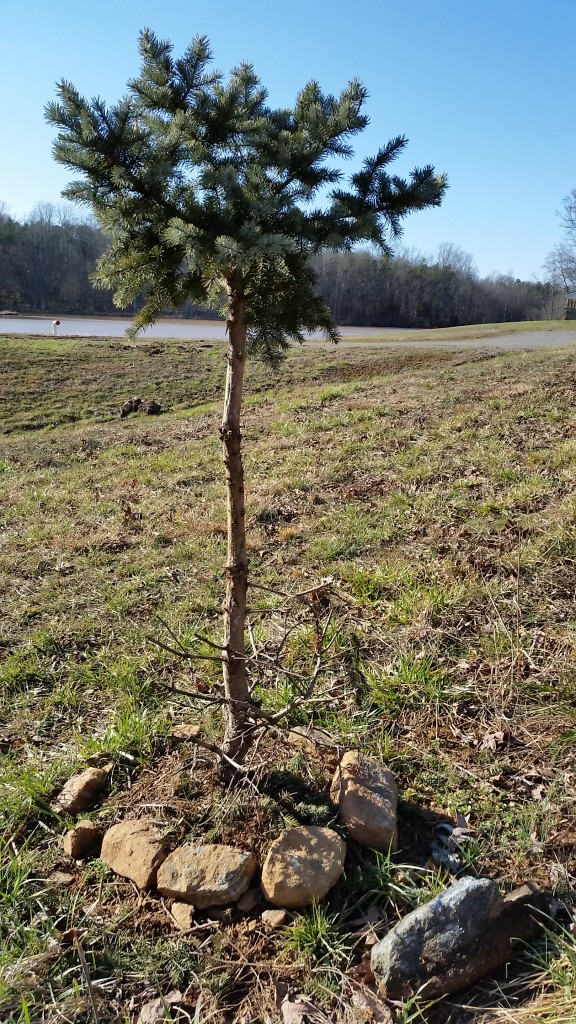Gardener vs. Deer
A herd of deer in the distance looks innocent and peaceful, but don’t be fooled: they can wreak havoc in residential landscapes. Gardens and ornamental plantings are no more than all-deer-care-to-eat salad bars. They relish munching prized tulips, azaleas and roses, as well as treasured perennials — only the best for them! And when the vegetation doesn’t suit their palate, they inflict damage in another way: by pulling up plants in random fashion.The battle between gardener and deer increases as urbanization reduces natural habitats.
“Deer have to fuel themselves, so as their natural territories gets impinged on, they go where the easy pickings are,” said Beth Burrell, a veteran landscape designer and deer-control consultant. “Grazing in the neighbor’s yard becomes their new natural habitat.”
Even trees aren’t exempt from their damage − especially smaller ones. In autumn, bucks rack (rub) their antlers up and down tree trunks during the shedding process. Smaller tree limbs and bark typically are stripped, leaving trunks bare wherever the deer’s rack reached. The affected trees and plants may not recover, and if they do, their appearance may be forever ruined.

Deer antlers stripped the bark and branches off this young evergreen. Wooden stakes, 4- to 5-foot tall, placed on either side of the trunk could have made antler access more difficult and perhaps saved the tree from irrevocable damage.
The simplest way to garden in areas wrought with herds is to select deer-resistant plants. Though no plant is truly deer-proof, deer have little interest in most scented herbs and fragrant plants. Resource lists of deer-resistant plants are available at many nurseries and the Lora M. Robins Library at Lewis Ginter Botanical Garden.
Otherwise, Burrell suggests encouraging deer to change their habits in order to save gardens and landscapes.
“I’ve seen so much sadness with crops and plants lost to deer,” said Burrell, who also is co-owner of Giving Tree in Mechanicsville. “I can’t say there’s an easy answer, but there are a number of things you can put in place.”
Controls and Preventives
Fencing can be simulated by using wire insulation hangers or wired flags set in the ground around plants. As a deer bends down to eat, it bumps its snout against the wire and is gently encouraged to forage elsewhere. Another option involves 8-foot-high black mesh tacked between posts or bamboo poles. The mesh creates a fairly invisible shield that flexibly deters deer. For challenging situations, double fencing may be required. Two rows of mesh installed at various heights confuse deer and discourage jumps over the fencing. Low-voltage electric fences baited with containers of peanut butter also can be used for brief periods to help change deer habits. Such fencing is not advisable, however, in areas with children or public access.
Bio controls rely on taste, odor or a combination of the two to repel deer. Though quickly effective, the need for continued application can become expensive. Some gardeners experiment with their own homemade concoctions using garlic, hot pepper sauces or rotten eggs. Deer have a keen sense of smell and tend to avoid areas with foul odors.
Conversely, Burrell cautioned that deer are enticed by the earthy scent of newly tilled dirt.
“Deer are like dogs in that they love the smell of fresh dirt,” Burrell said. “Their radar goes up, and they’re attracted.” When planting a garden or flower bed, she recommends applying an odor repellant in three steps: on the dirt, on the plants and finally across the entire area.
Sounds of barking dogs can scare wildlife away, but pets may be indoors when deer feed, typically at dawn and dusk. Innovative devices that make sudden or loud sounds may be more reliable. An example is a water sprinkler outfitted with a motion sensor. As a deer approaches, the sprinkler automatically cuts on, and the sound of pulsating water frightens away the garden invader.
Deer consultants can knowledgeably review areas of concern, spot patterns and avoid some of the guesswork in deer management. In addition, helpful resources are available from the Virginia Cooperative Extension and the Virginia Dept. of Game and Inland Fisheries.
Managing unwelcome wildlife can be challenging, but Burrell offered lighthearted encouragement.
“A deer is easier to deal with than a vole: you can at least see deer!”
This article first appeared in the Richmond Times-Dispatch in March 2016.
![Deer ate all the blooms of a rose bush. [Photo credit BETH BURRELL GIVING TREE]](https://www.lewisginter.org/wp-content/uploads/2016/03/1-1-1024x686.jpg)